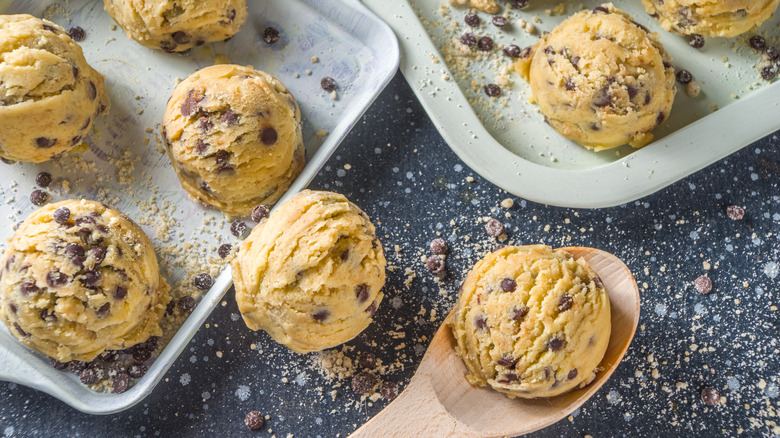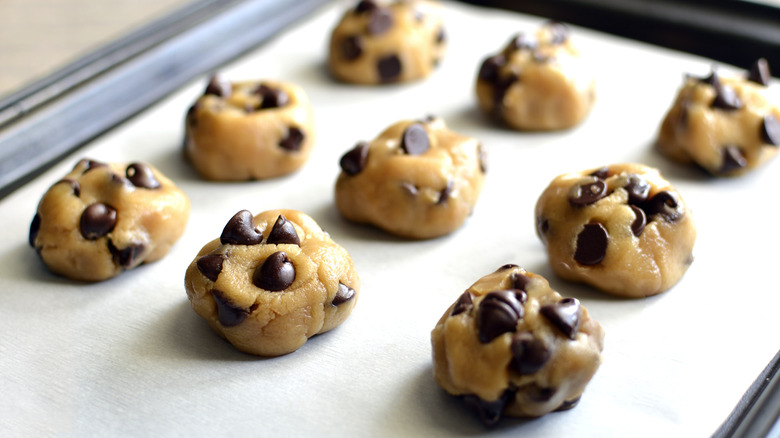How To Make Raw Cookie Dough Safe To Eat
Who among us hasn't had the pleasure of scooping raw cookie dough right from the bowl and into our mouths? As delicious as warm baked cookies are, there's just something irresistible about soft, buttery, caramelly dough — raw ingredients be damned. Whether the dough of choice is chocolate chunk, red velvet, or chocolate tahini, about a quarter of it seems to end up in our stomachs before it even makes it to the cookie sheet.
Many of us have probably indulged in this pastime since childhood, when baking up cookies at home with the family, and even professional pastry chefs aren't immune to raw dough's thrills: Kelly Fields, author of "The Good Book of Southern Baking," told Food & Wine, "It's always been my favorite part of making cookies. Still, to this day, I have a nugget of cookie dough almost every day that I'm at work. I can't walk past it without grabbing some."
But as much as we enjoy raw cookie dough, most of us have probably been told that it's dangerous, possibly harboring food-borne bacteria due to the presence of raw eggs (via the Centers for Disease Control and Prevention). But did you know there's another raw ingredient in cookie dough that should be cooked before the dough is safe to eat?
Heat-treat your flour to enjoy raw cookie dough
If you've ever eaten raw cookie dough – and who hasn't? — then you're probably aware that it's a somewhat risky activity, since some raw eggs can harbor food-borne pathogens such as salmonella, according to the Centers for Disease Control and Prevention (CDC). But did you know that raw flour can contain pathogens, too?
According to the CDC, while flour doesn't look raw, it actually is, and it can contain E. coli, a bacteria that can cause diarrhea, cramping, and nausea when it is ingested (via Mayo Clinic). These germs are only killed by cooking, so if you want to dig a spoon into your raw cookie dough, it's important to heat-treat it first.
So what is heat-treating? It's simply baking or microwaving flour until it reaches a temperature of 165 degrees Fahrenheit, which is high enough to kill any pathogens (via Today). After heat-treating, you can go on to mix your flour into cookie dough and munch away. As noted by the USDA's Food Safety and Inspection Service, pasteurized eggs are perfectly safe to eat raw — so it's actually the flour in cookie dough, and not the eggs, that presents more of a health threat.

